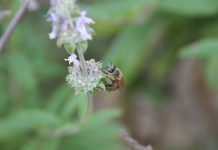
When it comes to taking care of our planet, deciding which areas to protect can be a big challenge. Experts often focus on saving places that are home to a wide variety of plants and animals because these areas are very important.
They help support more life and offer benefits like clean air and water, which make them a top choice for protection.
However, figuring out which places have the most variety of life isn’t straightforward. Scientists have different ways to measure this variety, and each method can give them a different picture of how life in a place like a forest is doing. This makes the job of protecting these areas even harder.
In a study that took a deep dive into this issue, researchers spent 20 years collecting information to understand the best way to see how lively and productive a forest is.
They concluded that the simplest approach—just counting the number of different kinds of trees in an area—is actually the most effective way to gauge a forest’s health and productivity.
Yunpeng Liu, the main researcher of this study and a scientist at the Florida Museum of Natural History, wanted to solve a puzzle. Previous studies had looked at small, separate areas of forests to understand diversity, but Liu had a bigger picture in mind.
He used a massive amount of data collected by the U.S. Forest Service, covering nearly two million tree measurements from forests all over the eastern United States.
This wasn’t just any forest data; it was from natural forests, where the trees weren’t planted by people but grew on their own.
The study showed that forests with a higher number of different kinds of trees were generally more lively and productive. This finding supports what many people already thought: when different kinds of trees interact, they create a stronger, more vibrant forest ecosystem.
These forests are better at storing carbon, providing homes for wildlife, and supplying resources like wood that people can use and then regrow.
Liu and his team also looked at other ways to measure diversity, thinking these might also link to how well a forest grows.
Surprisingly, they found that some of these other measures, like how closely related the tree species are or how different their sizes and shapes are, didn’t always mean the forest was more productive.
This was a bit of a puzzle because scientists thought that having a wide range of tree types and features would make a forest better at using its resources and more resilient to changes like diseases.
Douglas Soltis, another scientist involved in the study, explained that these different ways of looking at diversity are all important for making good decisions about protecting forests.
However, they found that simply counting the types of trees is a reliable and easy way to help understand a forest’s health.
This research is crucial because forests play a big role in balancing the Earth’s climate. They can absorb a significant amount of the carbon dioxide that people release into the atmosphere, helping to fight climate change.
But forests are also under threat from things like deforestation and climate change, so knowing how to keep them healthy is more important than ever.
For those working to restore damaged forests, this study offers a straightforward tip: plant more types of trees.
This simple approach can help make forests more productive and healthy, which is good news for the planet and for people trying to protect it.
In the end, this study not only helps scientists and policymakers but also gives everyone a clearer, simpler guide to helping forests thrive. By focusing on planting a diverse range of trees, we can make a big difference in protecting these vital ecosystems.
The research findings can be found in PNAS.
Copyright © 2024 Knowridge Science Report. All rights reserved.



